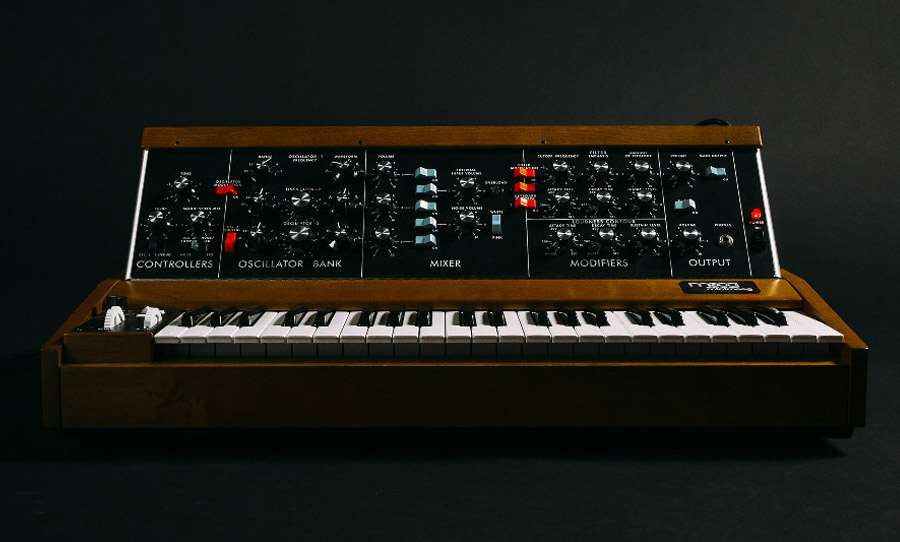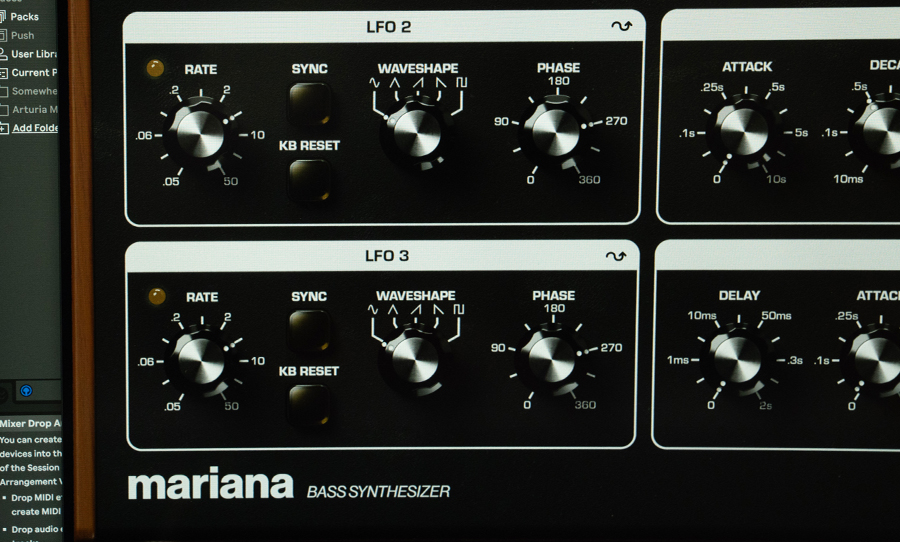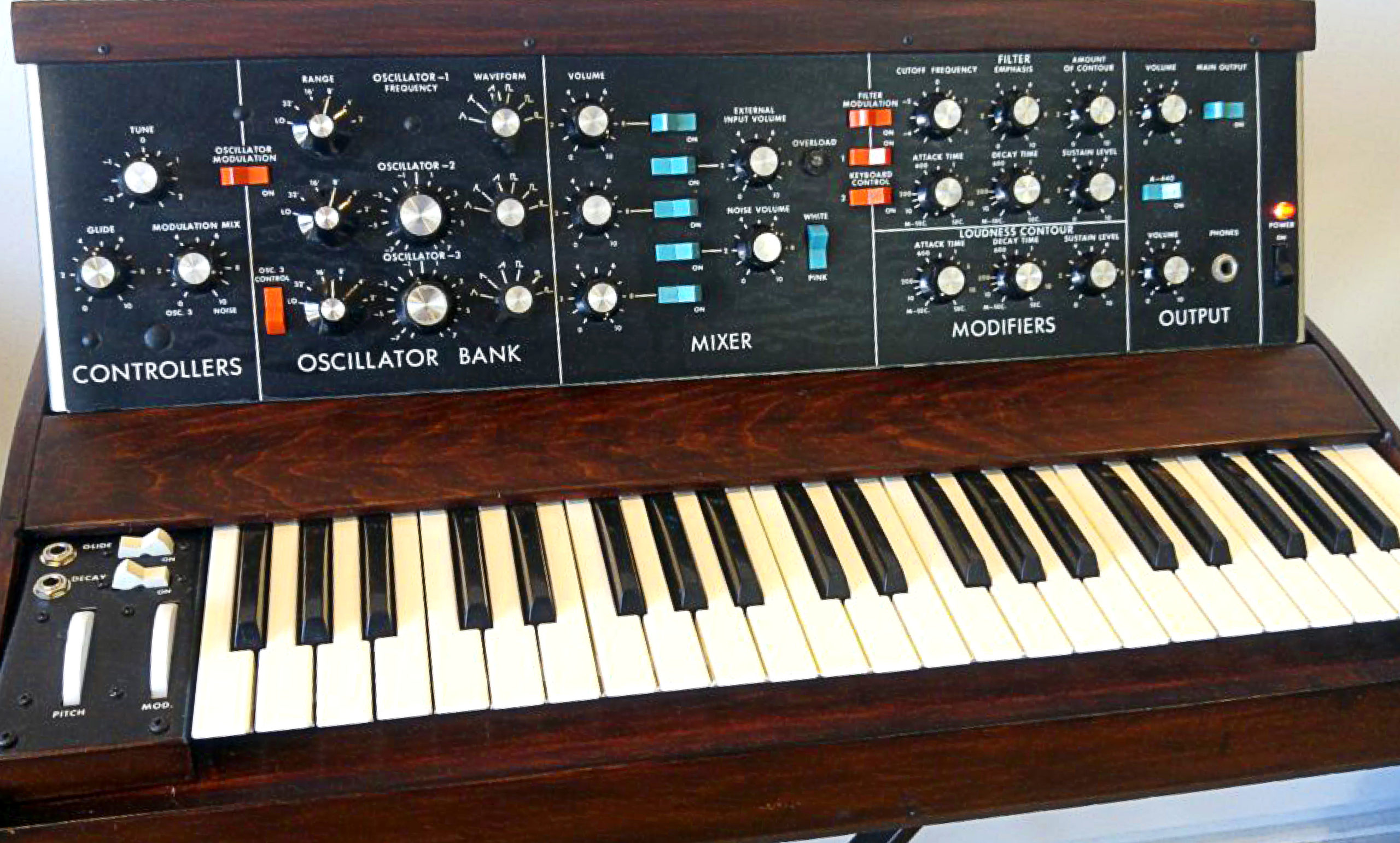An enduring legacy paired with a unique sound, the Minimoog Model D is the ancestor of modern synthesizers as we know them.
The Minimoog Model D is known as the synthesizer that started it all, but this legacy wasn’t built in a day. In the early 1960s, electronic music technology was impractical and inaccessible to musicians. Early synthesizers, such as the RCA Mark II, were enormous room-sized instruments, and relied on impractical technology like vacuum tubes and punchcards. In 1964, Robert Moog debuted the Moog synthesizer, the first commercial synthesizer, and the instrument that defined the analog synthesizer as it is known today.
While Moog’s modular synthesizer was both more affordable and more practical than most, it still remained largely inaccessible to musicians, with only 28 Moog synthesizers owned by musicians by 1970. Just around the corner, however, was the Minimoog – a powerful and portable instrument that became one of the most famous synthesizers in history.
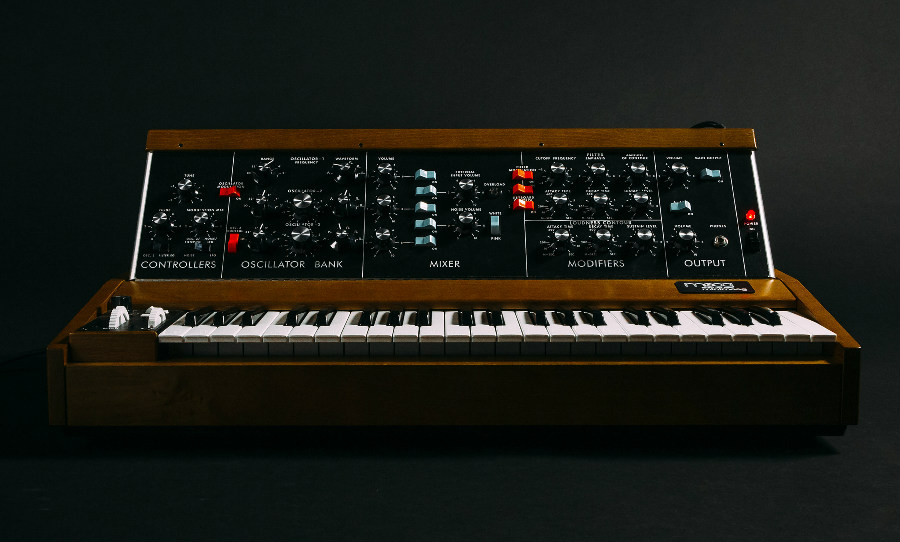
A new project
Early modular synthesizers were controlled by connecting different components of the synthesizer with patch cables. Finding sounds by this method was a time-consuming process, and was unappealing to musicians. The instruments were also temperamental, going out of tune with slight changes in temperature and humidity, making recreating sounds a nearly impossible process.
Bill Hemsath, an engineer at RA Moog Co, began to investigate whether it would be possible to create a smaller instrument with preset sounds, a concept he believed would be more appealing to musicians. In 1969, Hemsath began putting together spare parts in the company’s attic, with no specific aim in mind. Finding a broken keyboard, he salvaged the lower three octaves by sawing off the top half. Fitting the keyboard into a small cabinet with a series of hardwired patches, Hemsath had created the Min A, the Minimoog’s first prototype.
Neither Hemsath nor Robert Moog himself considered the prototype anything more than a science experiment. Hemsath, however, had become invested in the hobby, and continued to work with engineers Jim Scott and Chad Hunt on the Min B, the first version of the Minimoog to come with a suitcase. Sensing a change in the tide, Moog worked with Hemsath on the Min C, allowing his employees to continue work on the instrument.
Despite this, Moog still didn’t consider the project to have any real commercial appeal. However, the company soon faced a downturn in interest in the original Moog synthesizer. Following the enormous success of 1968’s Switched-On Bach, the synthesizer album that earned Wendy Carlos three Grammy awards, record companies attempted to recreate the success of the album. Despite many attempts at doing so, nobody was able to capture the same popularity as Carlos’s album, and record companies began cancelling their orders with Moog.
Faced with an excess of parts and a quickly failing company, the Moog engineers took it upon themselves to find a solution. Without Robert Moog’s permission, the engineers returned to their project, eventually producing a handful of instruments that they would call the Model D. While Robert Moog was initially displeased with what he perceived as a mutiny, he eventually came around. Realising the Model D could save his company, he agreed to go ahead with production on the Minimoog that would eventually hit the open market.
The unique sound
The Minimoog was essentially the ancestor for all synthesizers to come. The Minimoog was the first synthesizer to be sold in retail stores, a testament to the accessibility and affordability of the instrument. It was also the first synthesizer to combine several useful components in one device, including an internal keyboard. The centralised and compact control panel was a precedent-setting innovation, bypassing the cumbersome patch cables of modular synthesizers.
The Minimoog also featured a unique and characterful sound, courtesy of an engineering accident. Moog engineers could never find a way to properly stabilise the power supply of the instrument, so the three oscillators were unable to stay in phase. This unintentionally led to the rich, warm sound the Minimoog is most famous for. It also featured a unique voltage-controlled filter, also created by accident, as Jim Scott had overdriven the filter, generating the powerful filter sound the Minimoog is known for. Discovered after the synthesizer was already in production, the decision was made to leave the design intact, and the combination of these accidents allowed the instrument to create a diverse and expressive range of sounds.
One of the Minimoog’s key innovations was the pitch wheel, a control allowing the player to bend the pitch of the note. As the Minimoog was monophonic, it could only play one note at a time, so the ability to bend pitch provided musicians with a unique way to perform expressively as a solo instrument. Robert Moog did not patent the pitch wheel, or many of the other innovative features of the Minimoog, in a move that proved costly, as the pitch wheel became a standard feature on nearly every portable synthesizer since.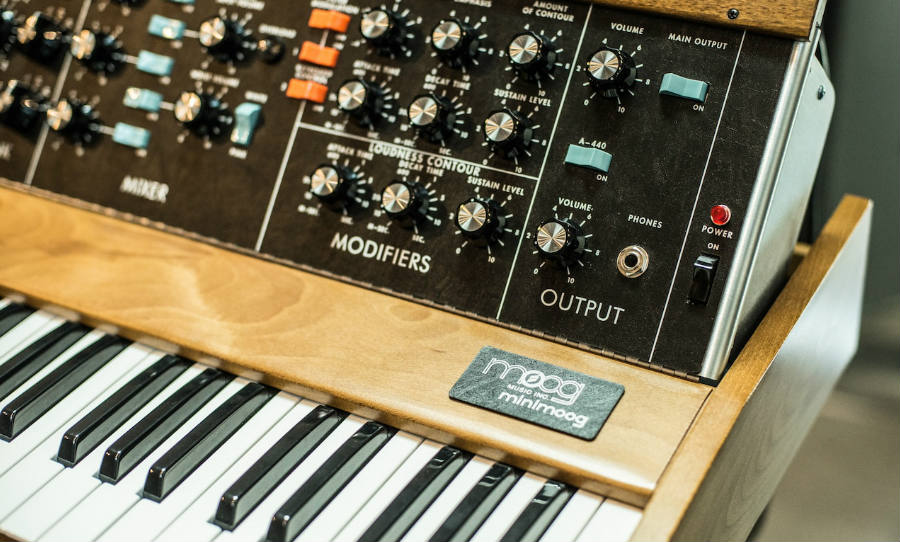
Immediate impact
The release of the Minimoog began changing the face of music almost instantly. In rock music, bands began to realise the full potential of the instrument, as it could alternately provide piercing leads and deep basses, allowing keyboardists to compete with lead guitarists and bassists at the same time. Keith Emerson, as in Emerson, Lake & Palmer, performed from multiple Minimoogs placed around his other keyboards on the stage. Rick Wakeman, of the seminal prog-rock band Yes, performed on up to five Minimoogs at a time, setting each to different sounds and moving around the stage as he required them.
The Minimoog also had immediate impact on jazz musicians, with Sun Ra adopting the Minimoog as early as the Min B. Sun Ra had visited the Moog factory when the project was still developing and was loaned a Min B. Heavily modifying the Min B, Sun Ra performed live with the instrument extensively, becoming possibly the first artist to record on the Minimoog with the 1970s My Brother The Wind. Soon, musicians such as Chick Corea and Herbie Hancock adopted the instrument, with the Minimoog being a crucial element in Hancock’s Head Hunters days.
The Minimoog also made it back to the electronic music roots of early synthesizers. Pioneering electronic music group Kraftwerk used the Minimoog on their classic albums Autobahn and The Man-Machine, spearheading a group of experimental musicians who would use the instrument for decades. The Minimoog’s influence eventually spread so wide that it would be adopted by genres that emerged in the late 70s and early 80s. Giorgio Moroder was among the first musicians to adopt the Minimoog in disco. Funk musicians such as James Brown and George Clinton featured the Minimoog on many of their albums, and these tracks have been sampled by hip-hop artists such as Public Enemy, Aaliyah, and De La Soul.
An enduring legacy
The Minimoog, along with other analog synthesizers, was eventually unable to compete with the advance of digital synthesizers, such as the famed Yamaha DX7. Having produced 12,000 units, production of the Minimoog stopped in 1981 when Robert Moog sold the company after being unable to meet demand, and the Moog company ceased all production in 1993. However, the legacy built by the Minimoog was not so easily dismantled.
Even today, the Minimoog is lauded for its unmatched warmth and character. Genuine analog synthesizers are highly sought after in today’s digital landscape, and the Minimoog is still considered one of the premier analog options. Musicians such as Kevin Parker, Thom Yorke, and Trent Reznor have all used the Minimoog on recent albums, as the instrument continues to have a life in the modern world.
In 2002, Robert Moog was able to reacquire the company and the Moog name. After decades out of operation, Moog relaunched with the Moog Voyager, a modern successor to the Minimoog, selling 14,000 units before being discontinued in 2015. After 35 years out of production, Moog reissued the Minimoog Model D in 2016, before discontinuing it again in 2017, citing high demand.
The legacy of the Minimoog lives on today in several unexpected forms. Behringer are currently producing a clone of the Minimoog for a tenth of the price, and the results are strikingly similar to the original. An app version of the Minimoog is available on iOS, and a rudimentary but still functional version of the iconic synthesizer even appeared as a Google doodle in 2012.
Whatever the future holds for Moog, the influence of Minimoog Model D can not be denied. An instant classic, the Minimoog changed the face of music and spanned genres and decades. The sound palette available to musicians exploded with the Minimoog, and it remains one of the most significant synthesizers in history.
